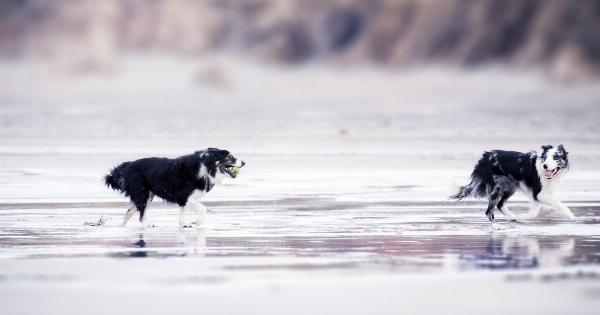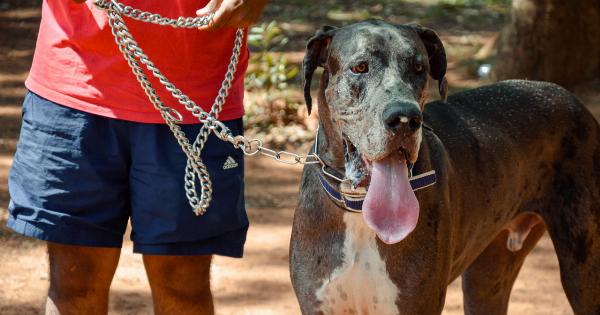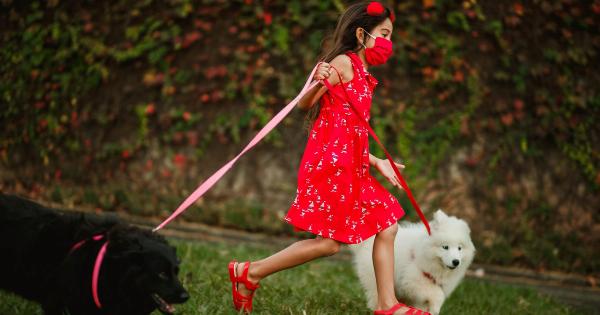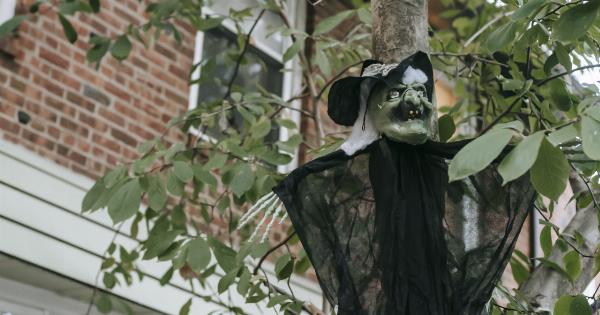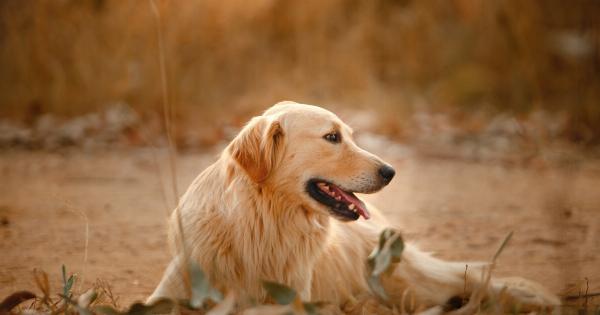Springtime is a delightful season for many, but it can also pose various risks to our furry friends.
As the weather starts to warm up and nature regains its vibrant colors, it’s essential to be aware of the potential hazards that spring can bring for our beloved dogs. To ensure a safe and enjoyable spring season for your canine companion, we have compiled a list of important tips to keep in mind:.
1. Allergies and Pollen
Just like humans, dogs can experience allergies during the spring months. Pollen from blooming plants and flowers can cause itching, sneezing, and watery eyes in your furry friend.
While it’s impossible to completely avoid allergens, you can minimize their impact by wiping your dog’s paws and coat after outdoor walks and keeping your home clean. Additionally, consult your veterinarian to determine if allergy medication is necessary to provide your dog with relief.
2. Fleas and Ticks
Spring is prime time for pesky fleas and ticks to make an appearance. These parasites can transmit diseases to your dog and cause discomfort and irritation.
Be sure to regularly check your dog for any ticks or fleas, especially after spending time in grassy areas or wooded areas. Using flea and tick prevention products recommended by your veterinarian is crucial to safeguard your dog from these pests.
3. Spring Cleaning and Chemicals
Spring is often associated with deep cleaning and the use of household chemicals. However, some cleaning agents and chemicals can be toxic to dogs. When cleaning your home, ensure that your dog is kept in a safe area away from harmful substances.
Store cleaning products securely and opt for pet-friendly, non-toxic cleaners whenever possible. If you suspect your dog has ingested a harmful substance, contact your veterinarian immediately.
4. Gardening Dangers
With the arrival of spring, many people embark on gardening projects. While gardening can be a relaxing and enjoyable activity, it’s important to be cautious about potential hazards for your dog.
Some plants and flowers, such as lilies, tulips, and daffodils, can be toxic to dogs if ingested. Fertilizers, insecticides, and other gardening chemicals should be stored securely and kept out of your dog’s reach.
5. Increased Outdoor Time
As the weather warms up, dogs and their humans tend to spend more time outdoors. While it’s wonderful to enjoy the fresh air and sunshine, remember to keep a watchful eye on your dog.
Ensure that your yard is securely fenced to prevent accidental escapes, and always supervise your dog during off-leash outings in safe and designated areas. Additionally, provide your dog with plenty of shade and fresh water to avoid heatstroke and dehydration.
6. Springtime Toxic Plants
Spring brings forth many beautiful flowers and plants, but some pose a threat to our canine companions. Educate yourself about toxic plants commonly found in your area, such as azaleas, sago palms, and daffodils.
Prevent your dog from coming into contact with these plants, as ingestion can lead to serious health issues. If you suspect your dog has consumed a toxic plant, contact your veterinarian immediately.
7. Open Windows and Balconies
With the arrival of mild weather, many people open their windows and doors to let fresh air in. However, open windows or accessible balconies can pose a danger to dogs, especially those who are curious or prone to chasing.
Ensure that windows are securely screened, and balcony areas are properly barricaded to prevent accidental falls or escapes.
8. Parasite Prevention
Aside from fleas and ticks, spring is also a season in which other parasites become more active. Mosquitoes, for example, can transmit heartworm larvae to your dog.
Consult your veterinarian about preventive measures, such as vaccinations and heartworm preventives, to keep your dog protected. Regular check-ups and screenings will help detect any potential issues early on and allow for timely treatment.
9. Springtime Pet Allergies
While it’s not only dogs who can suffer from allergies, it’s essential to be aware of potential allergies that might affect your dog during the spring.
Common allergens, such as grass, mold, or pollen, can cause skin irritations, itching, or gastrointestinal issues. Observe any unusual behavior or signs of discomfort and consult your veterinarian for proper diagnosis and treatment.
10. Beware of Bees and Stinging Insects
As flowers bloom and bees buzz, it’s important to be cautious about bees and other stinging insects when spending time outdoors with your dog. Some dogs may be curious and attempt to catch or play with bees, which can result in painful stings.
Keep an eye on your dog in outdoor areas with abundant flowers and swiftly remove them from the vicinity if bees are present.
By keeping these important tips in mind, you can ensure a safe and enjoyable spring season for your beloved canine companion. With some precautions and awareness, you and your furry friend can make the most of the beautiful springtime weather.

